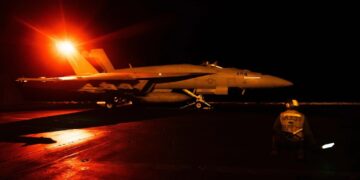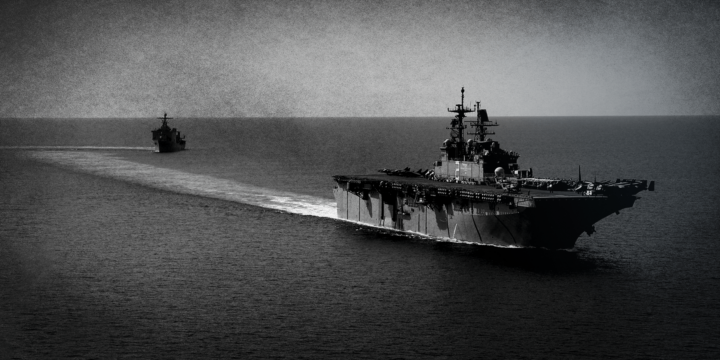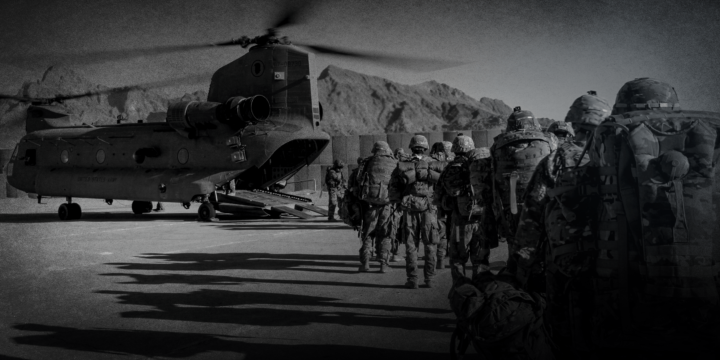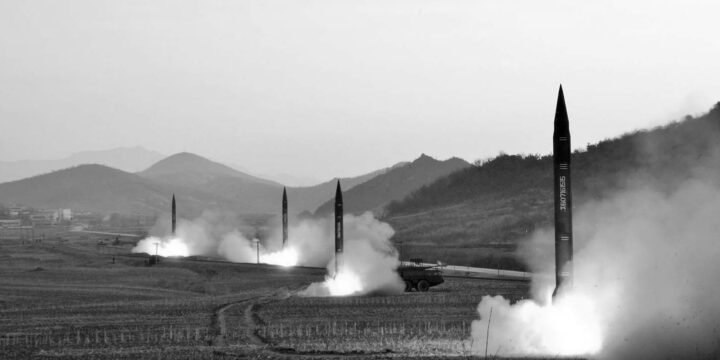April 5, 2021
Leaving Iraq and Syria avoids war and aids Iran diplomacy
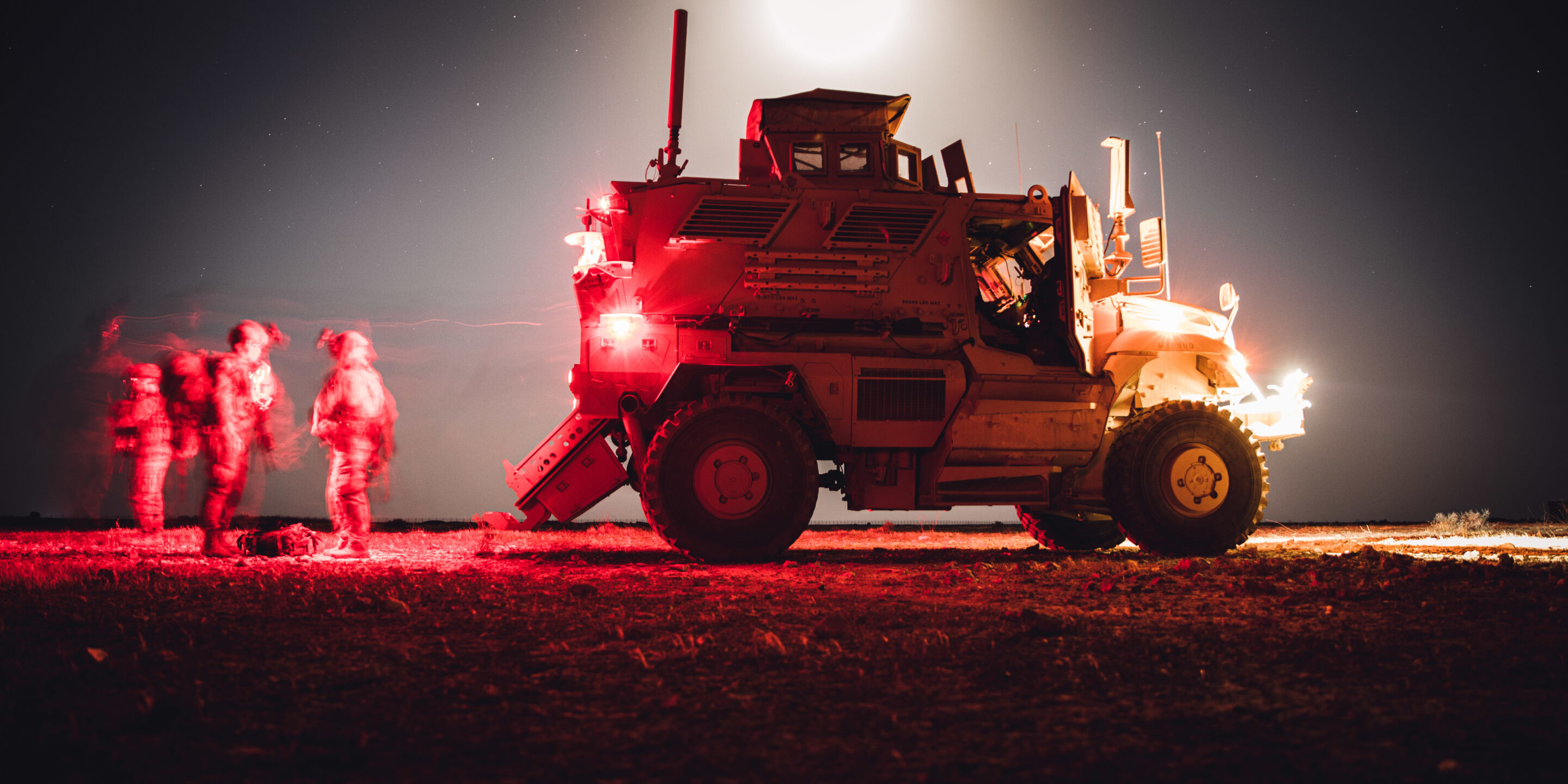
Key points
- Iran is a middling power contained by its neighbors and poses no direct threat to the U.S. Washington seeks to address at least three primary elements of Iran’s foreign policy: its (1) potential nuclear weapons program, (2) ballistic missiles, (3) and network of proxies engaged in foreign conflicts.
- Each of these challenges is best addressed with diplomacy, not military power. President Biden has committed to rejoining the Obama-era Joint Comprehensive Plan of Action (JCPOA), which offers a natural place to limit proliferation and then address other concerns.
- A return to the JCPOA requires abandoning “maximum pressure,” the failed escalation strategy pursued by the Trump administration. Maximum pressure has included not only sanctions, but also U.S. military deployments throughout the Middle East, including in Iraq (currently about 2,500 troops) and Syria (500–900).
- The U.S. military presence in Iraq and Syria—part of an unsuccessful compellence strategy—is a potential “tripwire” that could cause an escalation toward a larger and needless conflict with Iran. The posture also poisons relations with Iran, making diplomacy less likely.
- Withdrawing U.S. forces from Iraq and Syria would reduce the risks of war and aid President Biden’s efforts to pursue diplomacy with Iran and salvage the JCPOA.
Two different views from the White House
In April, Biden administration officials are set to attend a multilateral meeting in Vienna in hopes of restoring the 2015 Joint Comprehensive Plan of Action (JCPOA).1John Irish, Robin Emmott, and Parisa Hafezi, “U.S, Iran Head to Vienna for Indirect Nuclear Deal Talks,” Reuters, April 2, 2021, https://www.reuters.com/article/us-iran-nuclear-vienna/iran-world-powers-to-hold-nuclear-talks-in-vienna-on-tuesday-idUSKBN2BP0QY?il=0. The administration will also hold talks with Iraq on the future of the U.S. troop presence in that country.2Qassim Abdul-Zahra, “U.S., Iraq to Hold Talks Over American Troop Presence,” Associated Press, March 23, 2021, https://apnews.com/article/joe-biden-middle-east-iraq-baghdad-40902d7548ac504a497a8863fc09111f. The two issues are inextricably linked. U.S. troops in Iraq and in Syria are a part of the “maximum pressure” campaign against Iran that began under the last administration. Their removal would facilitate diplomacy with Tehran and move the U.S. toward a more restrained role in the Middle East. For those reasons, President Biden should fully withdraw from both Iraq and Syria.
On perhaps no foreign policy issue did the Obama and Trump administrations differ as much in their respective approaches as on Iran. By pursuing and ultimately signing the JCPOA in his second term, President Obama angered many in the Washington establishment, as well as some foreign capitals. Classifying the deal as an agreement with political commitments, rather than a treaty, allowed President Obama to act unilaterally and avoid seeking ratification from the Senate, a political battle he would have lost. The deal, entered into unilaterally by the executive branch, could therefore be abandoned just as easily—and President Trump did so in May 2018, beginning his maximum pressure campaign that included new sanctions on Iran, greater deference to Saudi Arabia and Israel, new deployments of U.S. troops to the Gulf, and steadfast support for the Saudi war in Yemen.
Maximum pressure made two promises: It would (1) moderate Iran’s foreign policy and (2) bring Iran to the table for a stronger non-proliferation agreement. While the campaign did harm the Iranian economy, the policy was an utter failure in terms of achieving its goals.
The Biden administration came into office seeking to return to the JCPOA.3Steven Erlanger, “Biden Wants to Rejoin Iran Nuclear Deal, but It Won’t Be Easy,” New York Times, November 17, 2020, https://www.nytimes.com/2020/11/17/world/middleeast/iran-biden-trump-nuclear-sanctions.html. The Trump administration, for its part, tried to make this as difficult as possible in its final days through actions that included placing sanctions that would be hard to remove and possibly giving Israel the green light to assassinate a top Iranian scientist.4Kylie Atwood, “U.S. official says Israel was behind assassination of Iranian scientist,” CNN, December 2, 2020, https://www.cnn.com/2020/12/02/politics/iran-scientist-israel-assassination-us/index.html. Maximum pressure may have poisoned the well to such an extent that the U.S. might simply be unable to go back to the status quo ante. The backlash to the U.S. leaving the deal has made Iranian domestic politics more hostile to it.5Dina Smeltz and John R. Cookson, “Would Iranians Welcome a New Nuclear Deal? Think Again.” Washington Post, March 27, 2019, https://www.washingtonpost.com/politics/2019/03/27/how-iranians-attitudes-toward-nuclear-deal-are-changing/. Nonetheless, the Biden administration can and should try to move toward a state of affairs that includes an easing of sanctions and a significantly reduced U.S. military investment in the greater Middle East.
While the U.S. cannot control Iranian domestic politics, the Biden administration can take at least one major step that would make life more difficult for those opposed to diplomacy at home, while leaving behind the lasting achievements of détente with Iran and a U.S. less militarily engaged in regional conflicts. The president should order a full military withdrawal from Iraq and Syria. This would decrease the probability of a miscalculation that could lead to a greater conflict, while also giving a future president less of an excuse to walk away from the JCPOA or any other agreement.
U.S. and Iranian engagement in Iraq and Syria
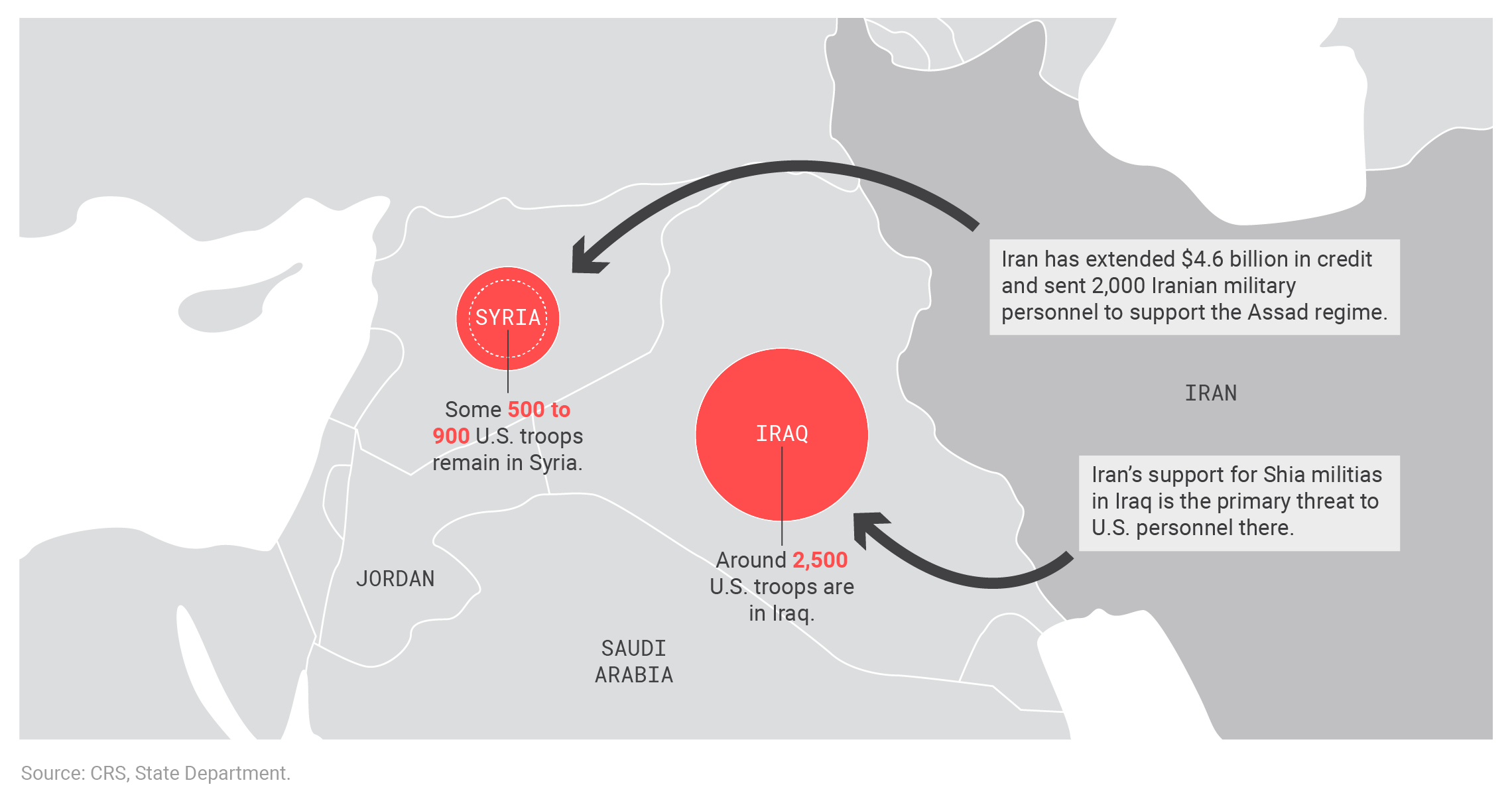
Given its location and sectarian ties in the region, Iran has long exerted influence in Iraq and Syria.
According to many in the Trump administration, U.S. forces were in Iraq and Syria to check Iranian influence.6“Briefing on Syria,” U.S. Embassy in Syria, November 14, 2018, https://sy.usembassy.gov/briefing-on-syria/. As long as the U.S. is in these countries, even if it disclaims such a purpose, it will be engaged in a regional rivalry with Iran. Bringing U.S. soldiers home would remove them from harm—away from a murky mission disconnected from U.S. security interests—and send a message about how the U.S. conceives of its role in the region. It would create practical difficulties for any future administration trying to recreate something similar to the maximum pressure policy. As it is always politically more difficult to send troops to a region than keep them there, a future administration that wanted to undo the accomplishments of the JCPOA would need to take active steps to restore hostilities instead of simply maintaining the status quo.
The shifting missions in Iraq and Syria
By design, the JCPOA sought to solve the nuclear issue, at least in the medium term, by avoiding other complicating issues, like Iran’s missile program, network of regional proxies, and general foreign policy. It was always intended as a starting point for follow-on negotiations to strengthen nuclear restrictions and address those other concerns.
In addition to the U.S., all other parties to the deal—France, Germany, the U.K., China, and Russia—saw the agreement as adequate to ensure there would be no Iranian nuclear weapons program. The Trump administration never made any serious argument about Iran being in breach of the deal. Rather, President Trump, in his speech withdrawing from the JCPOA, mostly cited Iranian behavior unrelated to the pursuit of nuclear weapons.7“Read the Full Transcript of Trump’s Speech on the Iran Nuclear Deal,” New York Times, May 8, 2018, https://www.nytimes.com/2018/05/08/us/politics/trump-speech-iran-deal.html. Over time, it became even clearer that, unlike its predecessor, the Trump administration did not want a settlement to the nuclear issue in isolation. Weeks after the American withdrawal, Secretary of State Mike Pompeo put forth an unrealistic proposal of 12 demands for a new nuclear treaty that included Iran pulling out of Iraq and Syria and stopping its supposed support for the Taliban in Afghanistan and Houthis in Yemen.8Michael R. Gordon, “U.S. Lays Out Demands for New Iran Deal,” Wall Street Journal, May 21, 2018, https://www.wsj.com/articles/mike-pompeo-lays-out-next-steps-on-iran-1526909126. Only 4 of the 12 demands were in any way related to the development of nuclear weapons. The 12 demands essentially called for a surrender of the Iranian government’s ability to defend itself from regime change.9Barry Posen, “Courting War,” Boston Review, March 3, 2020, http://bostonreview.net/war-security/barry-r-posen-courting-war.
Pompeo and other top officials did not want a scenario in which Iran was stopped from pursuing nuclear weapons but was able to continue what they saw as “malign activities.” For the Trump administration, a nuclear-only deal meant an Iran economically better integrated with the rest of the world, able to invest more in its military and intelligence services, and therefore with more influence in countries like Lebanon, Syria, and Iraq.
In contrast, by the U.S. opening up lines of communication and settling the nuclear issue first, President Obama argued American leaders would find it easier to negotiate less important issues later.10“Statement by the President on Iran,” The White House, January 17, 2016, https://sobamawhitehouse.archives.gov/the-press-office/2016/01/17/statement-president-iran. Moreover, an Iran with more influence in the region was not fatal to American national security interests. As President Obama said in an interview near the end of his presidency, the situation in the Middle East “requires us to say to our friends as well as to the Iranians that they need to find an effective way to share the neighborhood and institute some sort of cold peace.”11Jeffrey Goldberg, “The Obama Doctrine,” Atlantic, April 2016, https://www.theatlantic.com/magazine/archive/2016/04/the-obama-doctrine/471525/. Otherwise, if the U.S. simply supported its allies unconditionally, it “would mean that we have to start coming in and using our military power to settle scores. And that would be in the interest neither of the United States nor of the Middle East.” Regardless, the Obama administration did not simply grant the premise that more money going to Iran would make its behavior worse, but saw opening lines of communication as a worthy goal in and of itself that would be useful toward solving non-nuclear issues.
In January, the outgoing Trump administration reduced the number of American troops in Iraq to 2,500.12Robert Burns, Lolita Baldor, and Howard Altman, “U.S. Down to 2,500 Troops Each in Afghanistan and Iraq, as Ordered by Trump,” Military Times, January 15, 2021, https://www.militarytimes.com/news/your-military/2021/01/15/us-down-to-2500-troops-in-afghanistan-as-ordered-by-trump/. Nobody is quite sure exactly how many are in Syria. As of September 2020, the media often cited either 500 or 900. But according to James Jeffrey, who was the U.S. representative to Syria under President Trump, members of the administration had been “playing shell games to not make clear to our leadership how many troops we had there.” He revealed only that there were “a lot more” than the approximately 200 President Trump agreed to leave in 2019.13Kyle Rempfer, “U.S. Sends Mechanized Troops Back Into Syria,” Army Times, September 18, 2020, https://www.armytimes.com/news/your-army/2020/09/18/us-sends-mechanized-troops-back-into-syria/; Gordon Lubold and Isabel Coles, “U.S. to Cut Its Force in Iraq to About 3,000 Troops, Commander Says,” Wall Street Journal, September 9, 2020, https://www.wsj.com/articles/u-s-to-cut-its-force-in-iraq-to-about-3-000-troops-commander-says-11599653617; Katie Bo Williams, “Outgoing Syria Envoy Admits Hiding U.S. Troop Numbers; Praises Trump’s Mideast Record,” Defense One, November 12, 2020, https://www.defenseone.com/threats/2020/11/outgoing-syria-envoy-admits-hiding-us-troop-numbers-praises-trumps-mideast-record/170012/.
Timeline of maximum pressure strategy
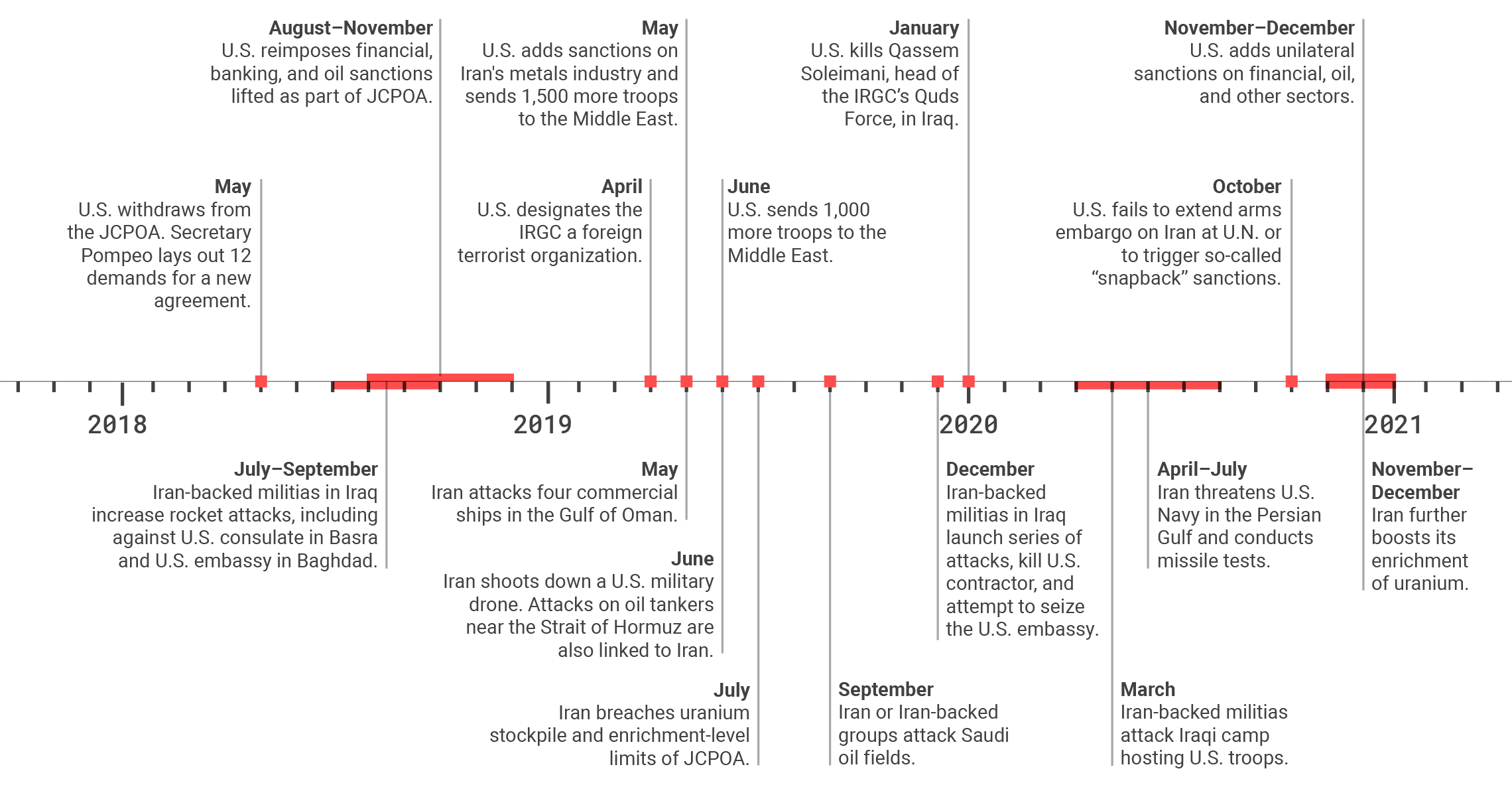
The maximum pressure strategy, begun in May 2018, is an escalation strategy that courts war with Iran.
Originally, American troops were sent to Iraq and Syria to liberate territory held by the Islamic State (ISIS). After President Obama pulled all ground forces from Iraq in late 2011, the U.S. returned to that country in summer 2014. A little more than a year later, American troops first entered Syria in an advisory role for partners on the ground fighting the same enemy.14Peter Baker, Helene Cooper, and David E. Sanger, “Obama Sends Special Operations Forces to Help Fight ISIS in Syria,” New York Times, October 30, 2015, https://www.nytimes.com/2015/10/31/world/obama-will-send-forces-to-syria-to-help-fight-the-islamic-state.html. The U.S. military mission was to destroy ISIS’s physical caliphate, not oppose Iranian influence in either country. In fact, Iran opposed ISIS, and it was therefore effectively on the same side as the U.S., at least in Iraq, where it cooperated with the Baghdad government. The anti-ISIS interventions in Iraq and Syria occurred during a time of reduced tensions with Iran, as the Obama administration was working on and finalizing the JCPOA.
President Trump continued the Obama administration’s anti-ISIS effort and defeated its last territorial possession in March 2019.15“Islamic State Group Defeated as Final Territory Lost, U.S.-Backed Forces Say,” BBC, March 23, 2019, https://www.bbc.com/news/world-middle-east-47678157. Yet American forces did not come home. By then, top Trump administration officials were presenting a new justification for remaining in those countries: maximum pressure. In February 2018, the head of U.S. Central Command (CENTCOM) Gen. Joseph Votel told Congress that “countering Iran is not one of the coalition missions in Syria.”16Rebecca Kheel, “Top General: Countering Iran in Syria Not a U.S. Military Mission,” The Hill, February 27, 2018, https://thehill.com/policy/defense/375789-top-general-countering-iran-in-syria-not-a-us-military-mission. Yet a few months later, echoing similar comments by James Jeffrey, National Security Advisor John Bolton said the U.S. would stay in Syria “as long as Iranian troops are outside Iranian borders.”17Missy Ryan, Paul Sonne, and John Hudson, “In Syria, Trump Administration Takes on New Goal: Iranian Retreat,” Washington Post, September 30, 2018, https://www.washingtonpost.com/world/national-security/in-syria-us-takes-on-new-goal-iranian-retreat/2018/09/30/625c182a-c27f-11e8-97a5-ab1e46bb3bc7_story.html. Gen. Kenneth McKenzie Jr., Gen. Votel’s successor as head of CENTCOM, would later tell a reporter, “we remain focused on Iran as our central problem.”18Katie Bo Williams, “Iran Is Our Top Priority, Says Senior U.S. Commander in Middle East,” Defense One, August 12, 2020, https://www.defenseone.com/threats/2020/08/iran-our-top-priority-says-senior-us-commander-middle-east/167651/. Finally, when talking to an interviewer in early 2019, President Trump said he kept troops at an Iraqi airbase “because I want to be looking a little bit at Iran.”19“Iraq Angered by Trump Idea to Watch Iran From U.S. Base,” BBC, February 4, 2019, https://www.bbc.com/news/world-middle-east-47118889.
What “countering” Iran has meant differs in each context. In Syria, it appears to involve preventing Bashar al-Assad’s forces from reclaiming territory with Iranian help. Iraq, in contrast, is seen as a legitimate government with a right to rule over its territory, but one that is subject to Iranian influence the U.S. must resist. The underlying rationale for why these things matter for the U.S. is rarely articulated, with Iranian influence generally taken as self-evidently a bad outcome. In early 2020, the Israeli Defense Minister said that to counter Iran, Israel had agreed to handle Syria while the U.S. was mostly focusing on Iraq.20Nati Yafet and Judah Ari Gross, “Bennett: U.S. Agreed to Counter Iran in Iraq While Israel Fights It in Syria,” Times of Israel, February 10, 2020, https://www.timesofisrael.com/us-agreed-to-fight-iran-in-iraq-israel-to-counter-tehran-in-syria-bennett-says/. But a little more than a year later, President Biden’s White House Press Secretary Jen Psaki said that forthcoming talks with Baghdad would “clarify that coalition forces are in Iraq solely for the purpose of training and advising Iraqi forces to ensure that ISIS cannot reconstitute.”21Ellen Mitchell, “White House Confirms New Round of Talks With Iraq on U.S. Troop Presence,” The Hill, March 23, 2021, https://thehill.com/policy/defense/544598-white-house-confirms-new-round-of-talks-with-iraq-on-us-troop-presence. Thus, the U.S. has gone from a purely ISIS-focused mission that put it on the same side as Iran, to a presence focused on checking Iran, to a return to the original mission.
Yet if the current administration is operating under the assumption U.S. troops can stay in Iraq, and presumably Syria, without hindering efforts at rejoining the JCPOA and decreasing the American military role in the region, it is badly mistaken.
How troops in Iraq and Syria contribute to tensions with Iran
As ISIS’s caliphate has been destroyed, the Biden administration—which sees non-proliferation as the primary national security goal vis-à-vis Iran and does not want to continue the maximum pressure campaign—has no good reason to be in Iraq or Syria.
The Biden administration should follow the path of President Obama and pursue diplomacy, not threats and coercion, as the best tool through which to accomplish U.S. goals. Troops in Iraq and Syria not only make diplomacy more complicated, but also create the risk of a miscalculation that can lead to increasing hostilities. In the chaos of those countries, negotiating with Iran on any issue becomes more difficult. As Jeffrey put it in 2018, “On top of a raging internal conflict that you’ve all been covering since 2011, you now have five states’ military forces—U.S., Russian, Turkish, Iranian, and Israeli, at least in the air—over and around Syria, bumping into each other.”22“Briefing on Syria,” U.S. Embassy in Syria. While most state actors try to avoid directly confronting one another, accidents, or what appear to be accidents, have occurred. Despite the relatively small American presence in Syria, troops have occasionally been involved in confrontations that could have easily escalated into something worse, including with Russia.23Thomas Gibbons-Neff, “How a 4-Hour Battle Between Russian Mercenaries and U.S. Commandos Unfolded in Syria,” New York Times, May 24, 2018, https://www.nytimes.com/2018/05/24/world/middleeast/american-commandos-russian-mercenaries-syria.html; Scott Neuman, “‘Dozens’ of Russian Mercenaries Reportedly Killed in U.S. Airstrikes in Syria,” NPR, February 14, 2018, https://www.npr.org/sections/thetwo-way/2018/02/14/585653555/dozens-of-russian-mercenaries-reportedly-killed-in-u-s-airstrikes-in-syria; Jack Detsch and Robbie Gramer, “Russia Runs U.S. Troops Off the Road in Syria,” Foreign Policy, August 27, 2020, https://foreignpolicy.com/2020/08/27/russia-run-united-states-troops-off-road-syria-conflict-united-nations/.
In January 2020, President Trump ordered an airstrike that killed IRGC Gen. Qassem Soleimani. The attack was a response to the storming of the U.S. Embassy in Baghdad a few days earlier.24Alex Johnson, Abigail Williams, Mosheh Gains, and Dan De Luce, “U.S. Sends Hundreds of Troops to Mideast after Attack on Embassy Compound in Baghdad,” NBC News, December 31, 2019, https://www.nbcnews.com/news/world/u-s-sending-hundreds-troops-mideast-after-attack-embassy-compound-n1109196. Some of those in the crowd were reportedly affiliated with Kata’ib Hezbollah, a militia backed by Tehran. In the months after the Soleimani killing, militia attacks against American forces in Iraq became more brazen and frequent.25Louisa Loveluck and Missy Ryan, “Militia Attacks on Americans in Iraq Are Becoming More Audacious. The U.S. Is Wrestling with How to Respond.,” Washington Post, March 28, 2020, https://www.washingtonpost.com/world/middle_east/militia-attacks-on-americans-in-iraq-becoming-more-audacious-us-wrestling-with-how-to-respond/2020/03/27/7b31d76c-6d38-11ea-a156-0048b62cdb51_story.html. The U.S., along with Israel, has also targeted Iranian or Iranian-backed forces in Syria, with Biden’s February 26, 2021, attack being the latest as of this writing.26Julian E. Barnes, “U.S. Launches Airstrikes on Iranian-Backed Forces in Iraq and Syria,” New York Times, December 29, 2019, https://www.nytimes.com/2019/12/29/world/middleeast/us-airstrikes-iran-iraq-syria.html; Gordon Lubold, Michael R. Gordon, and Nancy A. Youssef, “Biden Called Off Strike on a Second Military Target in Syria Last Week,” Wall Street Journal, March 4, 2021, https://www.wsj.com/articles/a-military-strike-in-syria-shows-biden-team-at-work-11614866795.
Unsurprisingly, military confrontations between different countries, occasionally resulting in casualties, are not good for diplomacy. This is particularly true when there are questions about the command-and-control structures of particular groups. Part of the danger is that, in the case of Iran-backed militias, it is usually unclear exactly how much influence Tehran exerts over certain actors on the ground. According to a report by the International Institute for Strategic Studies, “Iran’s relationship with Iraqi militant groups in its sphere of influence is often more one of mentorship than of direct command and control.”27“Iran’s Networks of Influence in the Middle East,” IISS, November 2019, https://www.iiss.org/publications/strategic-dossiers/iran-dossier/iran-19-06-ch-4-iraq. Yet Biden justified his first attack on Syria by pointing to attacks on American personnel in Iraq.28Lolita C. Baldor, Robert Burns, and Qassim Abdul-Zahra, “Biden: Strikes in Syria Sent Warning to Iran to ‘Be Careful,’” Associated Press, February 26, 2021, https://apnews.com/article/us-syria-airstrike-kills-1-34b4d7ac56fa8d0d2db8dc2ec8e921d6. The week before, an article in The New York Times that relied on anonymous sources within the military portrayed the president as putting American lives in danger by not responding to attacks.29Lara Jakes and Eric Schmitt, “Seeking Fresh Start with Iraq, Biden Avoids Setting Red Lines with Iran,” New York Times, February 20, 2021, https://www.nytimes.com/2021/02/20/us/politics/biden-iraq-iran.html. In the aftermath of its bombing, the administration seemed to go out of its way to signal that the move should not be seen as an escalation with Iran.
Two months into the Biden administration, it was already clear American forces in Iraq and Syria had the potential to sidetrack any attempts at easing relations with Iran, whether through a return to the JCPOA or other understandings and agreements.
Every confrontation between the U.S. and Iran brings calls from anti-Iran interventionists, who want negotiations to fail anyway, for a response. For example, tensions with Iran in early 2020 provided President Trump with an opportunity to repeat his talking point that the Obama administration had given that country billions of dollars, claiming the last president provided the money that was used to finance attacks on U.S. military personnel.30Aaron Blake, “As Trump Claims a Win on Iran, He Accuses Obama of Funding Its Attacks,” Washington Post, January 8, 2020, https://www.washingtonpost.com/politics/2020/01/08/trump-claims-win-iran-he-accuses-obama-funding-its-attacks/. The effect of such rhetoric is that any agreement with Iran that relieves financial sanctions or hardships can be criticized on the grounds that it made it easier for that country to fight American forces in the Middle East.
Troops in Iraq and Syria serve as a tripwire, perhaps by design, that can derail attempts at diplomacy at unpredictable times. Even if President Biden and his top officials are able to avoid any major confrontations that escalate to all-out war, as President Trump narrowly did, a future administration that wants to undo diplomatic gains will have a ready excuse to do so.
Whether they wait for a confrontation or help to precipitate one—or simply cite the U.S. and Iran being on opposite sides in two conflict zones—American ground forces in Iraq and Syria make it easier to renew hostilities.
Is there another reason to stay in Iraq and Syria?
Staying in Iraq and Syria makes it more difficult to normalize the U.S. relationship with Iran. But what about the anti-ISIS mission that brought American forces into those countries? Even if an administration seeks to improve relations with Tehran and sees troops in its neighborhood as a cost, it may still decide to keep them there if there is some greater mission the U.S. needs to accomplish.
Formerly ISIS-held territory in Iraq and Syria
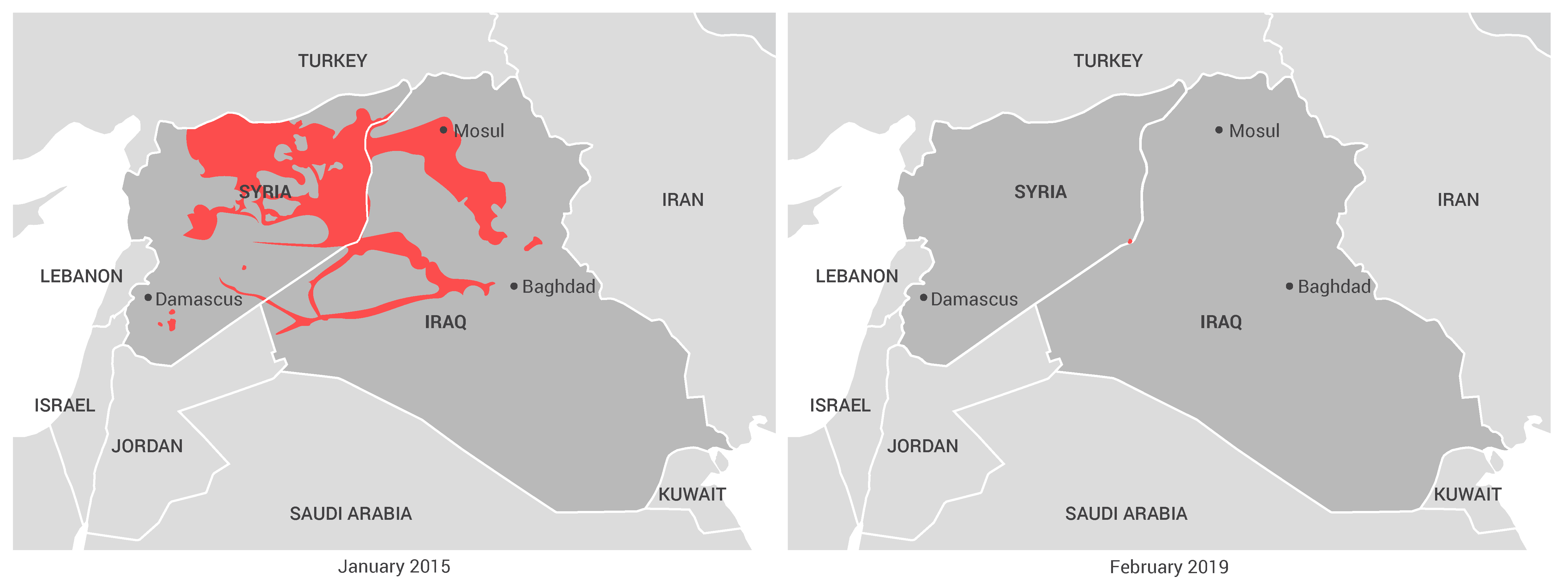
The U.S.-led coalition destroyed the last of ISIS’s territorial caliphate in March 2019. Today, local forces are capable of fighting the scattered remnants of ISIS without the presence of the U.S. military.
With its caliphate destroyed, U.S. forces are not necessary to limit the resurgence of what remains of ISIS. Much has changed since summer 2014, when U.S. air power prevented Iraqi cities and towns, possibly even Baghdad itself, from falling into the hands of the terrorist organization.
In the years since, both Russia and Iran have increased their roles in the region. In September 2015, Russian forces entered the Syrian Civil War on the side of Damascus.31Patrick J. McDonnell, W. J. Hennigan, and Nabih Bulos, “Russia Launches Airstrikes in Syria Amid U.S. Concern about Targets,” Los Angeles Times, September 30, 2015, https://www.latimes.com/world/europe/la-fg-kremlin-oks-troops-20150930-story.html. That same month, Russia, Iraq, Iran, and Syria entered into an intelligence-sharing coalition aimed at countering ISIS.32Neil Hauer, “Russia’s Influence in Iraq: Structurally Limited, Geopolitically Constrained,” Newlines Institute for Strategy and Policy, February 4, 2020, https://cgpolicy.org/articles/russias-influence-in-iraq-structurally-limited-geopolitically-constrained/. Iran was also instrumental in helping create the Popular Mobilization Units, Shia militias and semi-state actors fighting on the side of the Iraqi government that have displaced ISIS on the ground and held territory.33Adam Day, Hybrid Conflict, Hybrid Peace: How Militias and Paramilitary Groups Shape Post-Conflict Transitions (New York: United Nations University, 2020), 30–65. The Kurds, and Kurdish-led Syrian Democratic Forces (SDF), are also hostile to the Sunni extremists and their mission. In summary, there are several state and non-state actors in Iraq and Syria, and all of them oppose ISIS. Of these, only the SDF even arguably needs American help in order to hold its gains.
Another reason put forth for keeping American troops in the region is they effectively check Russia, a long-time ally of Syria that has demonstrated a strong interest in the current regime retaining control.
There is increasing recognition among analysts that even the oil-producing nations of the Middle East matter little to American security.34Justin Logan, “The Case for Withdrawing from the Middle East,” Defense Priorities, September 2020, https://www.defensepriorities.org/explainers/the-case-for-withdrawing-from-the-middle-east; Eugene Gholz and Daryl G. Press, “Protecting ‘The Prize’: Oil and the U.S. National Interest,” Security Studies 19, no. 3 (2010): 453–485. The Syrian regime not only lacks oil, but is also avowedly secular, meaning it is unlikely to support global terrorism, although it may do so in self-defense as when it supported jihadists going into Iraq after the U.S. overthrow of Saddam Hussein in 2003. In fact, Assad’s gains throughout the conflict have often come at the expense of ISIS.35Erika Solomon, “Syria Regime Recaptures Deir Ezzor from ISIS,” Financial Times, November 3, 2017, https://www.ft.com/content/7af0559c-c07b-11e7-b8a3-38a6e068f464; Laila Bassam and Angus McDowall, “Syrian Army, Allies, Take Last IS Stronghold in Syria: Commander,” Reuters, November 8, 2017, https://www.reuters.com/article/us-mideast-crisis-islamic-state/syrian-army-allies-take-last-is-stronghold-in-syria-commander-idUSKBN1D81NM. When the Syrian regime has not been fighting ISIS, it has often fought other Islamic extremists, like Jabhat al-Nusra, an offshoot of Al-Qaeda.
Even if preventing the Syrian regime from regaining territory were an appropriate American goal, Turkey has occupied areas of northern Syria since late 2016, making the aim of complete reconquest highly unlikely, except through a broad agreement that includes all relevant parties.
President Biden should withdraw all U.S. forces from Iraq and Syria
President Biden has expressed a desire to rejoin the JCPOA. While this effort should be applauded, the new administration should be more ambitious. As President Obama said, a “cold peace” in which the U.S. was not in danger of being drawn into another war meant Saudi Arabia would have to share the region with Iran.36Goldberg, “The Obama Doctrine.” In other words, while the two countries have found themselves on opposite sides in conflicts like those in Yemen and Syria, it is not in the interest of the U.S. to ensure one party ultimately triumphs over the other.
The Trump administration, in contravention to sound policy, pulled out of the JCPOA and implemented its maximum pressure campaign. Through sanctions and occasional military strikes, top officials argued, Iran would be brought to heel, with the regime either collapsing or becoming willing to negotiate away not only any nuclear ambitions, but also its missiles and support for non-government actors throughout the Middle East.
There is a growing recognition this approach has utterly failed, as can be seen in the congressional vote to end American support for the Saudi war in Yemen.37Lauren Gambino and Julian Borger, “Yemen War: Congress Votes to End U.S. Military Assistance to Saudi Arabia,” Guardian, April 4, 2019, https://www.theguardian.com/world/2019/apr/04/yemen-saudi-arabia-war-us-military-assistance-vote-congress-trump-veto-latest. Although the bill that was passed was met with a presidential veto, the vote made clear the Trump administration had become isolated in its all but unconditional support for the policies of Saudi Arabia and other regional powers. The new administration has signaled an end to American involvement with little domestic resistance.38Ben Hubbard and Shuaib Almosawa, “Biden Ends Military Aid for Saudi War in Yemen. Ending the War Is Harder.” New York Times, February 5, 2021, https://www.nytimes.com/2021/02/05/world/middleeast/yemen-saudi-biden.html.
President Biden came into office understanding that maximum pressure has failed, with the opportunity to repudiate President Trump’s misguided Iran strategy and instead build on President Obama’s legacy. Rejoining the JCPOA, which helps constrain Iran’s nuclear program, is a start. But tensions between the U.S. and Iran create difficulties toward not only maintaining the agreement in the long run, but also the ability of the U.S. to extract its military from the Middle East and end its counterproductive, unconditional support for regional powers. As long as U.S. troops remain in Iraq and Syria—vulnerable to Iran, Shia militias, and other hostile actors—American leaders will always find themselves in murky warzones on the precipice of all-out war.
This might be a necessary sacrifice if U.S. troops in the Middle East were accomplishing important national security goals. They are not. The fact that so many state actors are in Syria is a reason to leave, not stay. This is especially true since the five countries operating in the warzones—Turkey, Syria, Russia, Iraq, and Iran—all oppose ISIS. Given their geographic proximity to the relevant warzones, they have a stronger interest than the U.S. in uprooting the terrorist organization and ensuring it does not return to power. Arguments that the U.S. should stay in Iraq and Syria to check Russia or any other power make little sense. Influence for influence’s sake is not a serious strategy.
During the Trump administration, American troops provided a convenient reason to pull out of the JCPOA and otherwise pursue failed policies based on the idea that U.S. pressure could force Iran to bend to its will. Administration officials, whether sincere or not, claimed Iranian proxies, whether actually controlled by Tehran or not, were attacking U.S. troops. Such an argument tends to short-circuit debate on what U.S. troops are actually doing in Middle East warzones, much less what the larger strategy should be.
It is important that President Biden announce a complete withdrawal of U.S. forces from Iraq and Syria. Anything short of that would make diplomacy and détente with Iran less likely and therefore make a nuclear Iran—or an all-out preventive war to delay that outcome—more likely.
The Biden administration cannot change American policy toward the Middle East overnight, but it can act to change the domestic and geopolitical incentive structures that persistently draw the U.S. into conflicts for no good reason. The choice of the Biden administration is clear: It can either build on President Obama’s legacy by withdrawing from Iraq and Syria, or increase the likelihood that it is President Trump’s vision of the American role in the Middle East that ultimately triumphs.
Endnotes
- 1John Irish, Robin Emmott, and Parisa Hafezi, “U.S, Iran Head to Vienna for Indirect Nuclear Deal Talks,” Reuters, April 2, 2021, https://www.reuters.com/article/us-iran-nuclear-vienna/iran-world-powers-to-hold-nuclear-talks-in-vienna-on-tuesday-idUSKBN2BP0QY?il=0.
- 2Qassim Abdul-Zahra, “U.S., Iraq to Hold Talks Over American Troop Presence,” Associated Press, March 23, 2021, https://apnews.com/article/joe-biden-middle-east-iraq-baghdad-40902d7548ac504a497a8863fc09111f.
- 3Steven Erlanger, “Biden Wants to Rejoin Iran Nuclear Deal, but It Won’t Be Easy,” New York Times, November 17, 2020, https://www.nytimes.com/2020/11/17/world/middleeast/iran-biden-trump-nuclear-sanctions.html.
- 4Kylie Atwood, “U.S. official says Israel was behind assassination of Iranian scientist,” CNN, December 2, 2020, https://www.cnn.com/2020/12/02/politics/iran-scientist-israel-assassination-us/index.html.
- 5Dina Smeltz and John R. Cookson, “Would Iranians Welcome a New Nuclear Deal? Think Again.” Washington Post, March 27, 2019, https://www.washingtonpost.com/politics/2019/03/27/how-iranians-attitudes-toward-nuclear-deal-are-changing/.
- 6“Briefing on Syria,” U.S. Embassy in Syria, November 14, 2018, https://sy.usembassy.gov/briefing-on-syria/.
- 7“Read the Full Transcript of Trump’s Speech on the Iran Nuclear Deal,” New York Times, May 8, 2018, https://www.nytimes.com/2018/05/08/us/politics/trump-speech-iran-deal.html.
- 8Michael R. Gordon, “U.S. Lays Out Demands for New Iran Deal,” Wall Street Journal, May 21, 2018, https://www.wsj.com/articles/mike-pompeo-lays-out-next-steps-on-iran-1526909126.
- 9Barry Posen, “Courting War,” Boston Review, March 3, 2020, http://bostonreview.net/war-security/barry-r-posen-courting-war.
- 10“Statement by the President on Iran,” The White House, January 17, 2016, https://sobamawhitehouse.archives.gov/the-press-office/2016/01/17/statement-president-iran.
- 11Jeffrey Goldberg, “The Obama Doctrine,” Atlantic, April 2016, https://www.theatlantic.com/magazine/archive/2016/04/the-obama-doctrine/471525/.
- 12Robert Burns, Lolita Baldor, and Howard Altman, “U.S. Down to 2,500 Troops Each in Afghanistan and Iraq, as Ordered by Trump,” Military Times, January 15, 2021, https://www.militarytimes.com/news/your-military/2021/01/15/us-down-to-2500-troops-in-afghanistan-as-ordered-by-trump/.
- 13Kyle Rempfer, “U.S. Sends Mechanized Troops Back Into Syria,” Army Times, September 18, 2020, https://www.armytimes.com/news/your-army/2020/09/18/us-sends-mechanized-troops-back-into-syria/; Gordon Lubold and Isabel Coles, “U.S. to Cut Its Force in Iraq to About 3,000 Troops, Commander Says,” Wall Street Journal, September 9, 2020, https://www.wsj.com/articles/u-s-to-cut-its-force-in-iraq-to-about-3-000-troops-commander-says-11599653617; Katie Bo Williams, “Outgoing Syria Envoy Admits Hiding U.S. Troop Numbers; Praises Trump’s Mideast Record,” Defense One, November 12, 2020, https://www.defenseone.com/threats/2020/11/outgoing-syria-envoy-admits-hiding-us-troop-numbers-praises-trumps-mideast-record/170012/.
- 14Peter Baker, Helene Cooper, and David E. Sanger, “Obama Sends Special Operations Forces to Help Fight ISIS in Syria,” New York Times, October 30, 2015, https://www.nytimes.com/2015/10/31/world/obama-will-send-forces-to-syria-to-help-fight-the-islamic-state.html.
- 15“Islamic State Group Defeated as Final Territory Lost, U.S.-Backed Forces Say,” BBC, March 23, 2019, https://www.bbc.com/news/world-middle-east-47678157.
- 16Rebecca Kheel, “Top General: Countering Iran in Syria Not a U.S. Military Mission,” The Hill, February 27, 2018, https://thehill.com/policy/defense/375789-top-general-countering-iran-in-syria-not-a-us-military-mission.
- 17Missy Ryan, Paul Sonne, and John Hudson, “In Syria, Trump Administration Takes on New Goal: Iranian Retreat,” Washington Post, September 30, 2018, https://www.washingtonpost.com/world/national-security/in-syria-us-takes-on-new-goal-iranian-retreat/2018/09/30/625c182a-c27f-11e8-97a5-ab1e46bb3bc7_story.html.
- 18Katie Bo Williams, “Iran Is Our Top Priority, Says Senior U.S. Commander in Middle East,” Defense One, August 12, 2020, https://www.defenseone.com/threats/2020/08/iran-our-top-priority-says-senior-us-commander-middle-east/167651/.
- 19“Iraq Angered by Trump Idea to Watch Iran From U.S. Base,” BBC, February 4, 2019, https://www.bbc.com/news/world-middle-east-47118889.
- 20Nati Yafet and Judah Ari Gross, “Bennett: U.S. Agreed to Counter Iran in Iraq While Israel Fights It in Syria,” Times of Israel, February 10, 2020, https://www.timesofisrael.com/us-agreed-to-fight-iran-in-iraq-israel-to-counter-tehran-in-syria-bennett-says/.
- 21Ellen Mitchell, “White House Confirms New Round of Talks With Iraq on U.S. Troop Presence,” The Hill, March 23, 2021, https://thehill.com/policy/defense/544598-white-house-confirms-new-round-of-talks-with-iraq-on-us-troop-presence.
- 22“Briefing on Syria,” U.S. Embassy in Syria.
- 23Thomas Gibbons-Neff, “How a 4-Hour Battle Between Russian Mercenaries and U.S. Commandos Unfolded in Syria,” New York Times, May 24, 2018, https://www.nytimes.com/2018/05/24/world/middleeast/american-commandos-russian-mercenaries-syria.html; Scott Neuman, “‘Dozens’ of Russian Mercenaries Reportedly Killed in U.S. Airstrikes in Syria,” NPR, February 14, 2018, https://www.npr.org/sections/thetwo-way/2018/02/14/585653555/dozens-of-russian-mercenaries-reportedly-killed-in-u-s-airstrikes-in-syria; Jack Detsch and Robbie Gramer, “Russia Runs U.S. Troops Off the Road in Syria,” Foreign Policy, August 27, 2020, https://foreignpolicy.com/2020/08/27/russia-run-united-states-troops-off-road-syria-conflict-united-nations/.
- 24Alex Johnson, Abigail Williams, Mosheh Gains, and Dan De Luce, “U.S. Sends Hundreds of Troops to Mideast after Attack on Embassy Compound in Baghdad,” NBC News, December 31, 2019, https://www.nbcnews.com/news/world/u-s-sending-hundreds-troops-mideast-after-attack-embassy-compound-n1109196.
- 25Louisa Loveluck and Missy Ryan, “Militia Attacks on Americans in Iraq Are Becoming More Audacious. The U.S. Is Wrestling with How to Respond.,” Washington Post, March 28, 2020, https://www.washingtonpost.com/world/middle_east/militia-attacks-on-americans-in-iraq-becoming-more-audacious-us-wrestling-with-how-to-respond/2020/03/27/7b31d76c-6d38-11ea-a156-0048b62cdb51_story.html.
- 26Julian E. Barnes, “U.S. Launches Airstrikes on Iranian-Backed Forces in Iraq and Syria,” New York Times, December 29, 2019, https://www.nytimes.com/2019/12/29/world/middleeast/us-airstrikes-iran-iraq-syria.html; Gordon Lubold, Michael R. Gordon, and Nancy A. Youssef, “Biden Called Off Strike on a Second Military Target in Syria Last Week,” Wall Street Journal, March 4, 2021, https://www.wsj.com/articles/a-military-strike-in-syria-shows-biden-team-at-work-11614866795.
- 27“Iran’s Networks of Influence in the Middle East,” IISS, November 2019, https://www.iiss.org/publications/strategic-dossiers/iran-dossier/iran-19-06-ch-4-iraq.
- 28Lolita C. Baldor, Robert Burns, and Qassim Abdul-Zahra, “Biden: Strikes in Syria Sent Warning to Iran to ‘Be Careful,’” Associated Press, February 26, 2021, https://apnews.com/article/us-syria-airstrike-kills-1-34b4d7ac56fa8d0d2db8dc2ec8e921d6.
- 29Lara Jakes and Eric Schmitt, “Seeking Fresh Start with Iraq, Biden Avoids Setting Red Lines with Iran,” New York Times, February 20, 2021, https://www.nytimes.com/2021/02/20/us/politics/biden-iraq-iran.html.
- 30Aaron Blake, “As Trump Claims a Win on Iran, He Accuses Obama of Funding Its Attacks,” Washington Post, January 8, 2020, https://www.washingtonpost.com/politics/2020/01/08/trump-claims-win-iran-he-accuses-obama-funding-its-attacks/.
- 31Patrick J. McDonnell, W. J. Hennigan, and Nabih Bulos, “Russia Launches Airstrikes in Syria Amid U.S. Concern about Targets,” Los Angeles Times, September 30, 2015, https://www.latimes.com/world/europe/la-fg-kremlin-oks-troops-20150930-story.html.
- 32Neil Hauer, “Russia’s Influence in Iraq: Structurally Limited, Geopolitically Constrained,” Newlines Institute for Strategy and Policy, February 4, 2020, https://cgpolicy.org/articles/russias-influence-in-iraq-structurally-limited-geopolitically-constrained/.
- 33Adam Day, Hybrid Conflict, Hybrid Peace: How Militias and Paramilitary Groups Shape Post-Conflict Transitions (New York: United Nations University, 2020), 30–65.
- 34Justin Logan, “The Case for Withdrawing from the Middle East,” Defense Priorities, September 2020, https://www.defensepriorities.org/explainers/the-case-for-withdrawing-from-the-middle-east; Eugene Gholz and Daryl G. Press, “Protecting ‘The Prize’: Oil and the U.S. National Interest,” Security Studies 19, no. 3 (2010): 453–485.
- 35Erika Solomon, “Syria Regime Recaptures Deir Ezzor from ISIS,” Financial Times, November 3, 2017, https://www.ft.com/content/7af0559c-c07b-11e7-b8a3-38a6e068f464; Laila Bassam and Angus McDowall, “Syrian Army, Allies, Take Last IS Stronghold in Syria: Commander,” Reuters, November 8, 2017, https://www.reuters.com/article/us-mideast-crisis-islamic-state/syrian-army-allies-take-last-is-stronghold-in-syria-commander-idUSKBN1D81NM.
- 36Goldberg, “The Obama Doctrine.”
- 37Lauren Gambino and Julian Borger, “Yemen War: Congress Votes to End U.S. Military Assistance to Saudi Arabia,” Guardian, April 4, 2019, https://www.theguardian.com/world/2019/apr/04/yemen-saudi-arabia-war-us-military-assistance-vote-congress-trump-veto-latest.
- 38Ben Hubbard and Shuaib Almosawa, “Biden Ends Military Aid for Saudi War in Yemen. Ending the War Is Harder.” New York Times, February 5, 2021, https://www.nytimes.com/2021/02/05/world/middleeast/yemen-saudi-biden.html.
Author

Richard
Hanania
President
More on Middle East
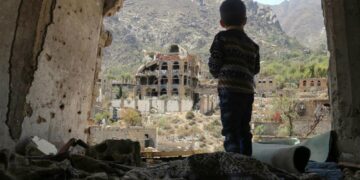
April 2, 2025

April 1, 2025
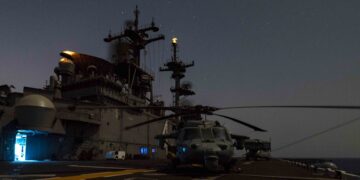
March 30, 2025


